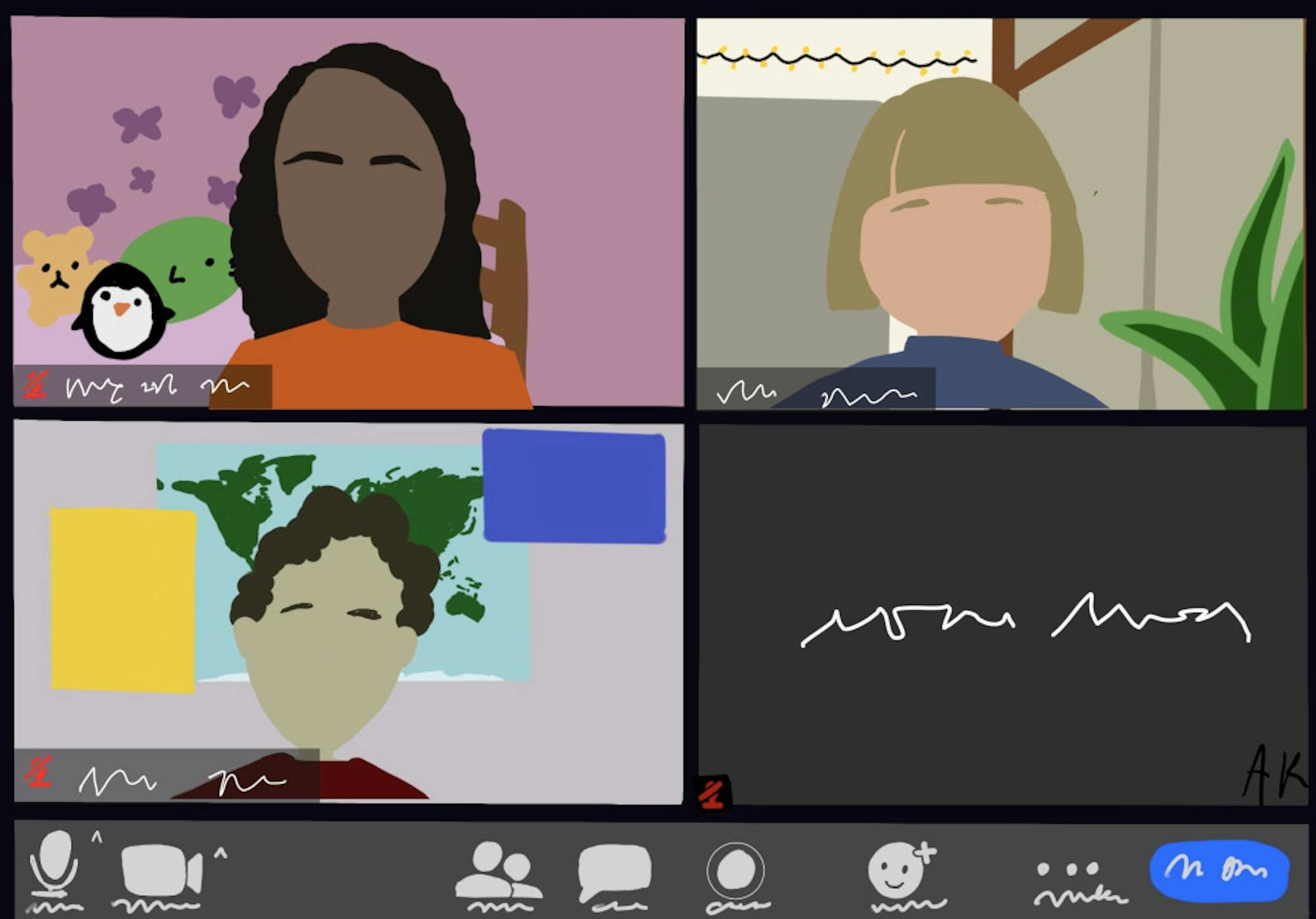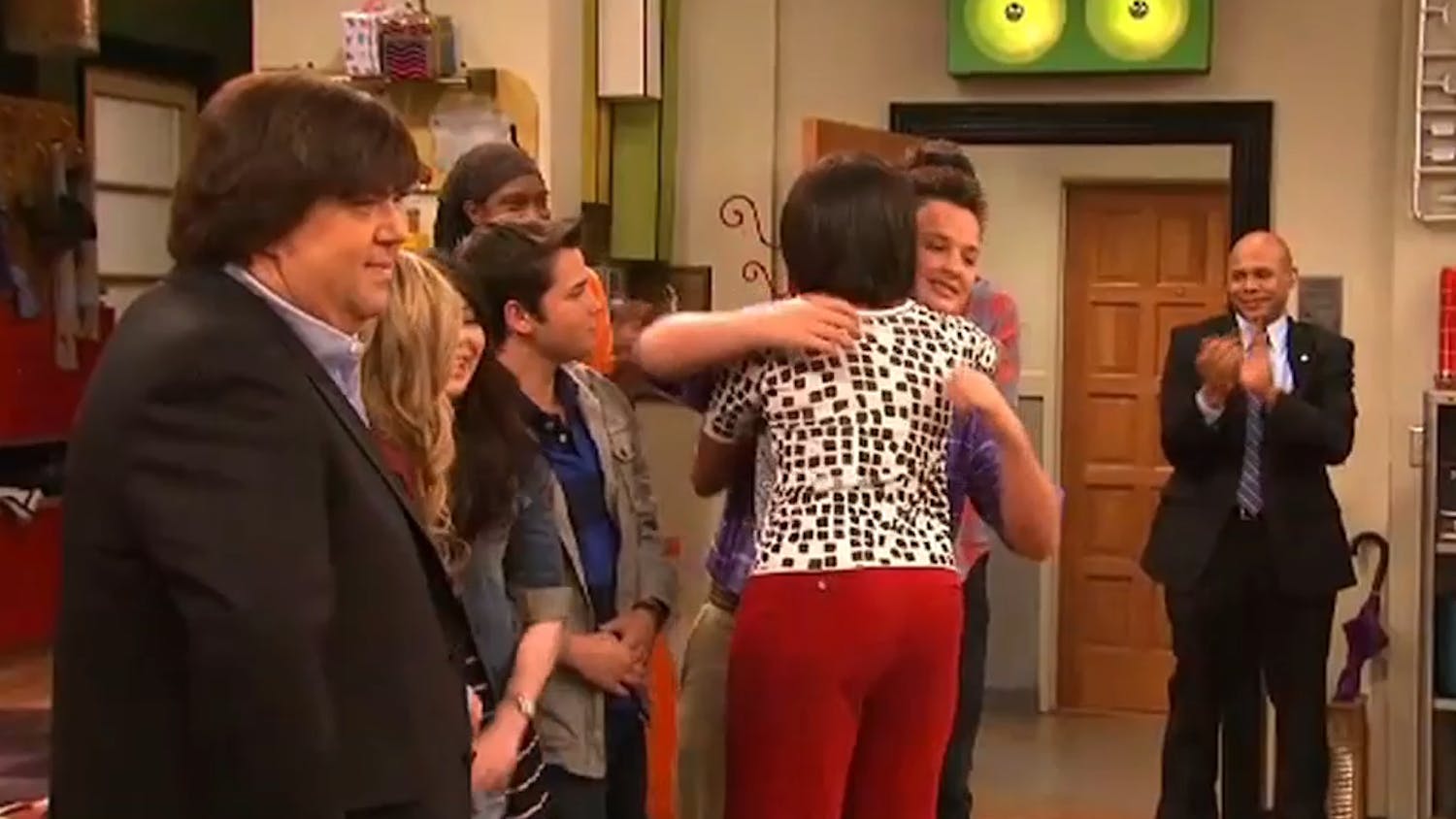Some of the hallmarks of the COVID-19 era include masking, social distancing and awkward breakout rooms. The announcement of breakout rooms in class catalyzes that moment where you feel compelled to sit up, turn on your camera and prove that yes, you really are there on the other side of the screen. A few minutes spent “face to face” with a stranger, of which the only obvious and shared fact is being a Tufts student, has become the very definition of awkward. A glance to one corner of the screen may lead to the initiation of an intense staring contest with the movie poster hanging over a peer’s bed in the background. Every blink, hiccup and chomp is noticed in this virtually intimate moment.
The beginning of new breakout rooms gives rise to the recitation of a well-worn script that consumes the first few seconds. “Hi, my name is Ari and I’m from Miami, Florida. I am majoring in psychology and going into consulting or marketing after college.”
Except one time, that routine didn’t happen. We skipped over introductions and my writing seminar classmate blurted out, “Your favorite color is pink! … Right?” Privately questioning how she knew this trivial fact, I slowly nodded. After ruminating on this exchange, I turned back to see my pink dumbbells perched on my windowsill, which peek through the right side of my frame on Zoom.
This prompted me to think: Zoom, an unfortunate consequence of our inability to be together, has actually granted us a lot more insight into each other than we might have in a normal academic year.
In typical in-person classes, our peers glean initial impressions of us from our clothing, which changes every day, and the stickers on our laptops, which may not have changed since high school. Since these observations are purely physical, it follows that we can curate ourselves to be the version we want our classmates to perceive. On Zoom, though, there is no concealing who we are. With our bedrooms as the backdrop every time we turn our cameras on, we are forced to show our classmates a personal segment of our lives. The intricacies of a room — the chosen color scheme, hung vinyl and sports posters, maps of a hometown city, shelves brimming with plants, the warm glow of waterfall string lights — allow a glimpse into a more private life. In these rooms, there is no pressure to contort yourself into someone you’re not and pretend to like the things you don’t. In my case, those pink dumbbells were a glimpse into a part of who I am that would never have been obvious in an in-person class.
Zoom’s little rectangles, defined in neat rows and columns and separated by thin black lines, are, literally and metaphorically, superficial barriers. They’re the gateway into each other’s lives on a deeper, more personal level than we have ever experienced before. “Awkward” breakout rooms give us a profound sense of connection, as small talk now revolves around that neon LED sign on the wall and not how windy it is on the Hill today. Breakout rooms are notoriously uncomfortable because others are seeing the place in which we are freely and totally ourselves. Zoom demands us to exhibit our sincerest selves and in doing so, it encourages us to compensate for time apart by forming connections rooted in detail and authenticity.
As vaccine distribution unfolds and we look to return to educational practices that are not entirely facilitated by Zoom, let’s promote forming relationships of this same caliber. Genuine connections are not about what we wear or the stickers on our laptops; they’re about the interests that make us our unique selves. Let’s forget all that was awkward about breakout rooms and cherish in-person dialogue. Next time you start a conversation with the student sitting next to you in class, skip over the mundane weather chatter and leap right into “Your favorite color is pink! ... Right?”






